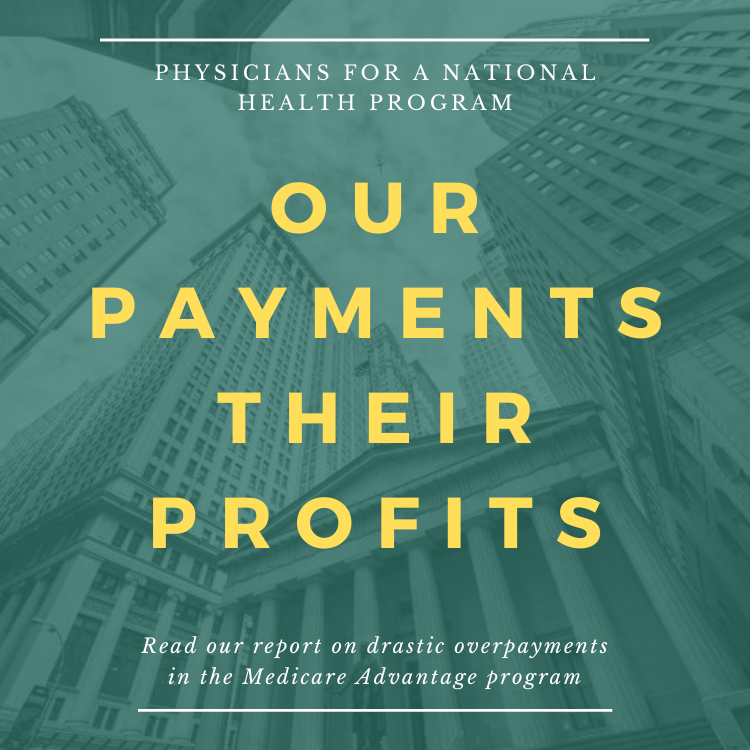FTI Consulting, November 2019
Key Findings
- Introducing a public option could create a “two-tier” health system where employer- based insurance provides access to a different set of hospitals or services than those available to enrollees in public insurance.
- The government would be expected to set premiums for the public option approximately 25 percent below market value for comparable private insurance plans, squeezing out private competition and diminishing consumer choice. The significant discrepancy in premiums would cause the eventual elimination of all private plans in the individual market.
- By 2028, 20 percent of state marketplaces would not offer a single private insurance option as a result of the introduction of the public option.
- In the first year following introduction of the public option, over 130,000 Americans enrolled in ACA coverage would be forced off of their existing health plan as private insurers exit the marketplaces. Over a decade, up to two million marketplace enrollees could experience a loss of private coverage.
Conclusion
The success of the ACA in expanding affordable coverage through increased private sector competition is one reason why it remains popular today. For years, politicians have toyed with the idea of introducing a public option into our nation’s health care system. Time and time again, efforts have failed when it became clear that doing so would destabilize health coverage for the millions of Americans satisfied with their existing coverage. The results of FTI’s analysis demonstrate that introducing a public option to the ACA marketplaces would not serve to build upon the existing system, but would instead displace private insurance plans in most markets. Instead of bearing the risks associated with public option plans, several states have implemented market stabilization measures, such as reinsurance, that have successfully reduced costs to consumers and state governments. Such programs offer a potential alternative to the public option for policymakers seeking to reduce health care costs while preserving consumer choice.
Acknowledgments: This work was supported by the Partnership for America’s Health Care Future.
https://americashealthcarefuture.org…
Comment:
By Don McCanne, M.D.
This consultant’s report was supported by the Partnership for America’s Health Care Future – “an ad hoc alliance of American hospital, health insurance, and pharmaceutical lobbyists committed to preventing legislation that would lead to single payer healthcare, expanding Medicare, or creating Medicare for All in particular” (Wikipedia). So what bias does the report demonstrate?
The consultants conclude that introducing a public option (a publicly administered insurance program) to the ACA insurance exchanges (marketplaces) would place the private plans at a considerable competitive disadvantage and drive them out of the exchanges.
What could the public option do that would be more appealing to patients than the private plans? Rather than the narrower provider networks of the private plans, the public option might be open to all current Medicare providers, which constitute most of our health care delivery system. Also they expect premiums for the public option to be 25 percent lower than private plans, likely representing both administrative efficiencies and administered pricing that would be features a public option.
The public option does sound like a much better deal for beneficiaries than the private plans. In fact, driving out the more expensive private plans through competition is touted to be a benefit of markets. The risk under market theory would be that the single plan remaining would be a monopoly that could drive prices up and reduce services. But in this case the public option would not be driven by profits and shareholder demands; instead, it would continue as a public service providing appropriate health benefits at a fair cost.
Although it would seem that this report was produced to scare the public by threatening them with the loss of their private coverage, it seems that it might have the opposite effect of enticing them into supporting a public option. More likely, this report may be used internally to scare the members of the Partnership for America’s Health Care Future, causing them to intensify their lobbying efforts against the public option, and, by extension, especially against Medicare for All.
This report emphasizes the consequences of a public option since many consider it to be an incremental step towards Medicare for All. But merely enacting a public option would add yet one more player to our highly dysfunctional, fragmented health care financing system. It would be much more logical to move directly to a single payer system of Medicare for All.
Can you imagine what the members must think about the prospect of the government offering the entire nation superior benefits with spending moderated through administrative efficiencies and negotiation of fair prices that would be paid by a public universal risk pool? Unfair competition! Maybe the medical industrial complex would consider it unfair, but what could be more fair for the patients?
Stay informed! Visit www.pnhp.org/qotd to sign up for daily email updates.
